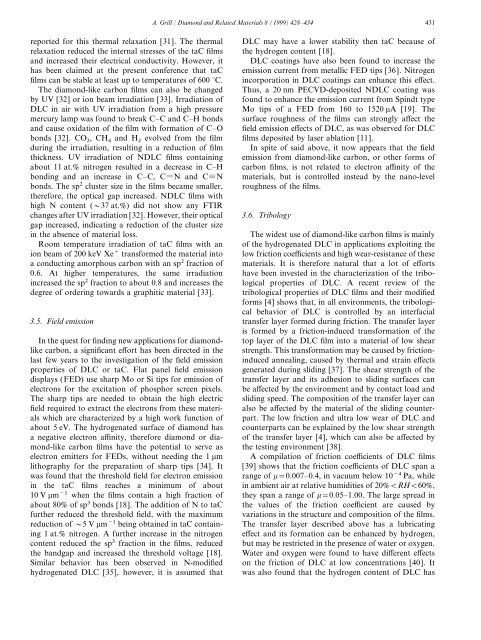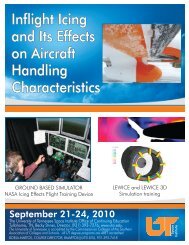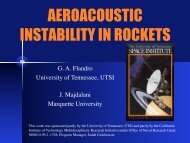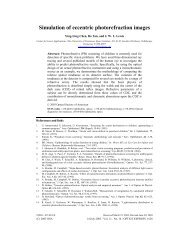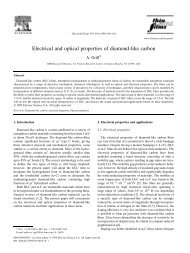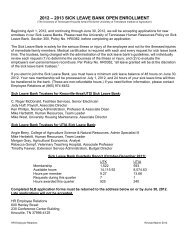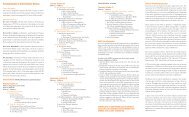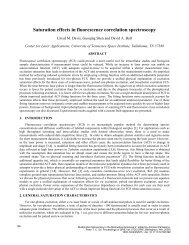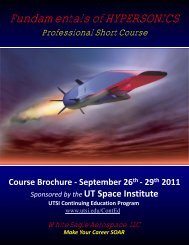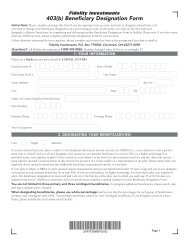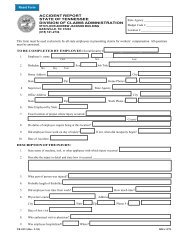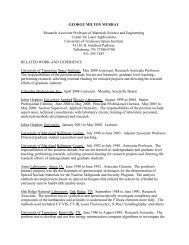Diamond-like carbon: state of the art
Diamond-like carbon: state of the art
Diamond-like carbon: state of the art
Create successful ePaper yourself
Turn your PDF publications into a flip-book with our unique Google optimized e-Paper software.
A. Grill / <strong>Diamond</strong> and Related Materials 8 (1999) 428–434<br />
431<br />
reported for this <strong>the</strong>rmal relaxation [31]. The <strong>the</strong>rmal DLC may have a lower stability <strong>the</strong>n taC because <strong>of</strong><br />
relaxation reduced <strong>the</strong> internal stresses <strong>of</strong> <strong>the</strong> taC films <strong>the</strong> hydrogen content [18].<br />
and increased <strong>the</strong>ir electrical conductivity. However, it DLC coatings have also been found to increase <strong>the</strong><br />
has been claimed at <strong>the</strong> present conference that taC emission current from metallic FED tips [36]. Nitrogen<br />
films can be stable at least up to temperatures <strong>of</strong> 600 °C. incorporation in DLC coatings can enhance this effect.<br />
The diamond-<strong>like</strong> <strong>carbon</strong> films can also be changed Thus, a 20 nm PECVD-deposited NDLC coating was<br />
by UV [32] or ion beam irradiation [33]. Irradiation <strong>of</strong> found to enhance <strong>the</strong> emission current from Spindt type<br />
DLC in air with UV irradiation from a high pressure Mo tips <strong>of</strong> a FED from 160 to 1520 mA [19]. The<br />
mercury lamp was found to break C–C and C–H bonds surface roughness <strong>of</strong> <strong>the</strong> films can strongly affect <strong>the</strong><br />
and cause oxidation <strong>of</strong> <strong>the</strong> film with formation <strong>of</strong> C–O field emission effects <strong>of</strong> DLC, as was observed for DLC<br />
bonds [32]. CO ,CH and H evolved from <strong>the</strong> film films deposited by laser ablation [11].<br />
2 4 2<br />
during <strong>the</strong> irradiation, resulting in a reduction <strong>of</strong> film In spite <strong>of</strong> said above, it now appears that <strong>the</strong> field<br />
thickness. UV irradiation <strong>of</strong> NDLC films containing emission from diamond-<strong>like</strong> <strong>carbon</strong>, or o<strong>the</strong>r forms <strong>of</strong><br />
about 11 at.% nitrogen resulted in a decrease in C–H <strong>carbon</strong> films, is not related to electron affinity <strong>of</strong> <strong>the</strong><br />
bonding and an increase in C–C, CNN and CON materials, but is controlled instead by <strong>the</strong> nano-level<br />
bonds. The sp2 cluster size in <strong>the</strong> films became smaller, roughness <strong>of</strong> <strong>the</strong> films.<br />
<strong>the</strong>refore, <strong>the</strong> optical gap increased. NDLC films with<br />
high N content (~37 at.%) did not show any FTIR<br />
changes after UV irradiation [32]. However, <strong>the</strong>ir optical 3.6. Tribology<br />
gap increased, indicating a reduction <strong>of</strong> <strong>the</strong> cluster size<br />
in <strong>the</strong> absence <strong>of</strong> material loss.<br />
The widest use <strong>of</strong> diamond-<strong>like</strong> <strong>carbon</strong> films is mainly<br />
Room temperature irradiation <strong>of</strong> taC films with an <strong>of</strong> <strong>the</strong> hydrogenated DLC in applications exploiting <strong>the</strong><br />
ion beam <strong>of</strong> 200 keV Xe+ transformed <strong>the</strong> material into low friction coefficients and high wear-resistance <strong>of</strong> <strong>the</strong>se<br />
a conducting amorphous <strong>carbon</strong> with an sp2 fraction <strong>of</strong> materials. It is <strong>the</strong>refore natural that a lot <strong>of</strong> efforts<br />
0.6. At higher temperatures, <strong>the</strong> same irradiation have been invested in <strong>the</strong> characterization <strong>of</strong> <strong>the</strong> tribological<br />
properties <strong>of</strong> DLC. A recent review <strong>of</strong> <strong>the</strong><br />
increased <strong>the</strong> sp2 fraction to about 0.8 and increases <strong>the</strong><br />
degree <strong>of</strong> ordering towards a graphitic material [33].<br />
tribological properties <strong>of</strong> DLC films and <strong>the</strong>ir modified<br />
forms [4] shows that, in all environments, <strong>the</strong> tribological<br />
behavior <strong>of</strong> DLC is controlled by an interfacial<br />
transfer layer formed during friction. The transfer layer<br />
3.5. Field emission<br />
is formed by a friction-induced transformation <strong>of</strong> <strong>the</strong><br />
In <strong>the</strong> quest for finding new applications for diamond<strong>like</strong><br />
top layer <strong>of</strong> <strong>the</strong> DLC film into a material <strong>of</strong> low shear<br />
<strong>carbon</strong>, a significant effort has been directed in <strong>the</strong> strength. This transformation may be caused by friction-<br />
last few years to <strong>the</strong> investigation <strong>of</strong> <strong>the</strong> field emission induced annealing, caused by <strong>the</strong>rmal and strain effects<br />
properties <strong>of</strong> DLC or taC. Flat panel field emission generated during sliding [37]. The shear strength <strong>of</strong> <strong>the</strong><br />
displays (FED) use sharp Mo or Si tips for emission <strong>of</strong> transfer layer and its adhesion to sliding surfaces can<br />
electrons for <strong>the</strong> excitation <strong>of</strong> phosphor screen pixels. be affected by <strong>the</strong> environment and by contact load and<br />
The sharp tips are needed to obtain <strong>the</strong> high electric sliding speed. The composition <strong>of</strong> <strong>the</strong> transfer layer can<br />
field required to extract <strong>the</strong> electrons from <strong>the</strong>se materi- also be affected by <strong>the</strong> material <strong>of</strong> <strong>the</strong> sliding counterp<strong>art</strong>.<br />
als which are characterized by a high work function <strong>of</strong><br />
The low friction and ultra low wear <strong>of</strong> DLC and<br />
about 5 eV. The hydrogenated surface <strong>of</strong> diamond has counterp<strong>art</strong>s can be explained by <strong>the</strong> low shear strength<br />
a negative electron affinity, <strong>the</strong>refore diamond or diamond-<strong>like</strong><br />
<strong>of</strong> <strong>the</strong> transfer layer [4], which can also be affected by<br />
<strong>carbon</strong> films have <strong>the</strong> potential to serve as <strong>the</strong> testing environment [38].<br />
electron emitters for FEDs, without needing <strong>the</strong> 1 mm A compilation <strong>of</strong> friction coefficients <strong>of</strong> DLC films<br />
lithography for <strong>the</strong> preparation <strong>of</strong> sharp tips [34]. It [39] shows that <strong>the</strong> friction coefficients <strong>of</strong> DLC span a<br />
was found that <strong>the</strong> threshold field for electron emission range <strong>of</strong> m=0.007–0.4, in vacuum below 10−4 Pa, while<br />
in <strong>the</strong> taC films reaches a minimum <strong>of</strong> about in ambient air at relative humidities <strong>of</strong> 20%


